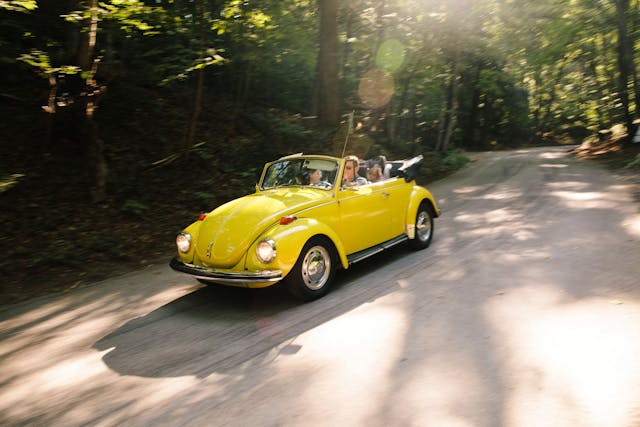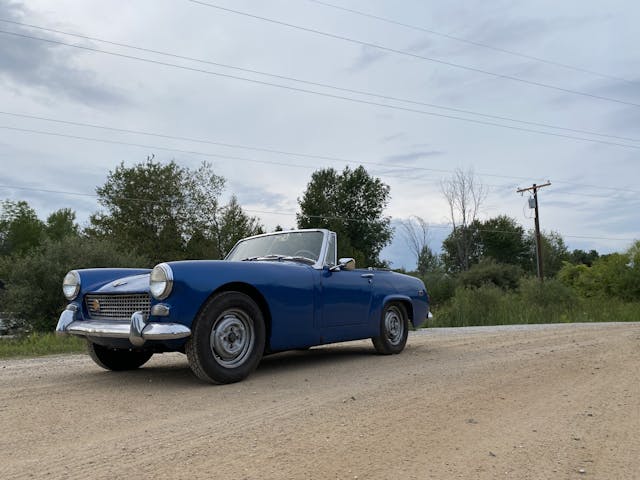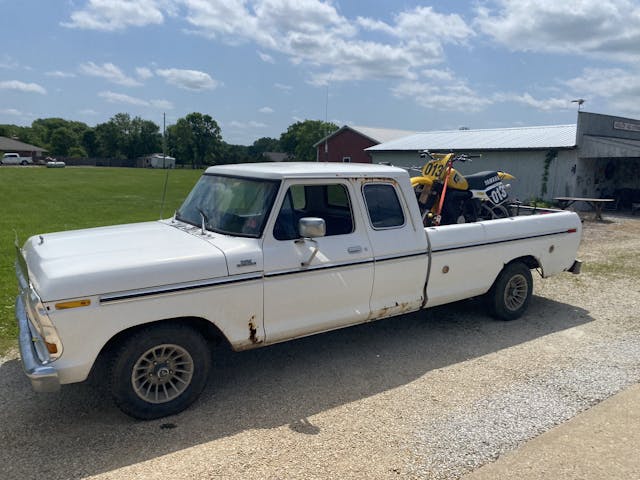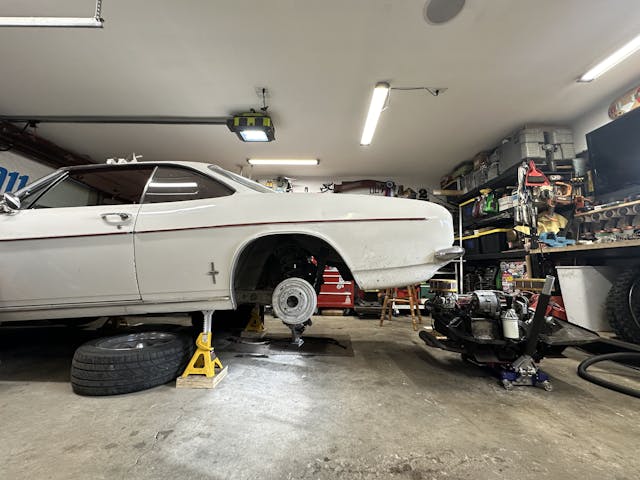Media | Articles
5 Fantastic First Project Cars
When it comes to a project car, it’s best to dive into one that truly lights a flame inside you. A project car is almost always mentally, physically, and financially draining at some point in your relationship with it. If you don’t care to stick it out through such hurdles, frustration might block you from ever returning to the project again.
So, where to begin? The list of needy cars for sale from the world’s garages, carports, driveways, and open fields can seem overwhelming. It can be easy to dream big. Of course, hell-on-wheels traps exist; certain cars are difficult to source parts for, offer minimal community and owner support, or are just plain prone to breaking.
Some cars, on the flip side, offer a stronger foundation for novices. Today we’ll be donning the role of Car Matchmaker. Whether you’re new to the hobby or a veteran, smoother-sailing and joy-to-own DIY classics are out there— here are five vehicles we think might be right for you:
Little British Cars
A cheap British sports car can offer plenty of, uh, opportunities to bond with the mechanically inclined owner. The nice thing is that there were tens of millions of Austin-Healeys, Triumphs, and MGs produced during the 1960s and ’70s that share much in terms of maintenance parts and techniques. The cars are relatively affordable, and thus, so are the parts. The biggest boon: support and knowledge provided by other enthusiasts. British car clubs are often large and helpful—perfect for a newbie to the genre.
Volkswagen Beetle

The Beetle dethroned the Model T for the outright model sales record, eventually going on to account for over 21 million sales. There is safety in numbers, which often correlates with good parts support and pricing. The aftermarket support for Bugs is downright impressive, even compared with other mainstream vintage cars like Mustangs or Chevelles. Beetle owners will get familiar with regular maintenance like oil changes and valve adjustments, but the fundamental build and design are sturdy; if you do the job right the first time, you likely won’t have to do it again unexpectedly.
Marketplace
Buy and sell classics with confidence
Ford Model A or T
You want to learn the basics? Then buy one of the most basic cars you can drive. Just stare at a Model T for more than a few minutes, and you’ll notice that none of the critical parts are hiding. Everything is pretty out in the open. Best of all, components were overbuilt by a factor or two in most areas. Model Ts—and As, for that matter—don’t require many power tools, which means they’re accessible and enjoyable to work on whether you’re a tool rookie or an experienced wrench. Fun to learn on and fun to drive? That’s a good project car.
Trucks of the 1970s and ’80
As simple as the aforementioned Fords are, their age comes with real-world usage limitations. If a utility is an aspect you value in a finished project car, vintage pickups from the 1970s and ’80s are a great place to look. These are rugged, tough hunks of metal that enjoy fairly high tolerance for deferred maintenance. If you are willing to buck up and take on the challenge of catching up on all the stuff the last owner neglected, the juice can be worth the squeeze. Fruits of your labor will include functional overdrive transmissions, disc brakes, and decent power, all baked into solid packages with relatively simple powertrains and chassis. Being trucks, they also have beds for work—or pleasure hauling. For those without a utility-focused daily driver, that’s a nice bonus when trying to justify how a collector car fits into your lifestyle.
Anything you don’t expect to daily drive
In reality, just about anything that makes you look forward to dirty hands and busted knuckles is the right project car. Expectations, however, are important; old, semi-working cars tend to behave like old, semi-working cars—they can break down and sit out of commission for extended periods. Take it from me: Spending Sunday evening underneath your car is a lot more relaxing when you don’t need the thing to get to work the next morning.
*
The whole project car process, even if it requires a long timeline, can be as rewarding as the end result. The thrill of parts finding is sometimes more thrilling than installing or even using said parts; whether buying something that requires lots of networking and parts hunting might be perfect for you, as long as you go down that road with both eyes open. Tougher endeavors in that vein hone project-car skills, but the learning curve is often steep and time-consuming. Patience is essential, so if you want more immediate gratification, relative oddball stuff like Wankel-powered NSUs or Nash Metropolitans may not be the ideal place to get your feet wet.
Find a car you think you’ll love, and the learning, fixing, and driving it all become part of the adventure. Get some experiencce under your belt and before you know it, you’ll have more than one project in the pipeline—don’t say we didn’t warn you!
***
Check out the Hagerty Media homepage so you don’t miss a single story, or better yet, bookmark it. To get our best stories delivered right to your inbox, subscribe to our newsletters.










As a novice DIY mechanic who frequently needs the help of other, more experienced folks, I can tell you that small British cars are a great place to start. I began with a ’79 MGB, bought a ’72 TR6 and finally an ’80 TR8. There’s a lot of support from the local clubs and, at least until they retire, some outstanding repair/restoration shops nearby. BTW, I also have an ’05 XK8, but that doesn’t exactly fit the “small British car” mold. Now, with all that said, I’ve always had my eye on a Model A or even a Model B……
1960s vintage compacts, like Falcon, Dart, Chevy II, Valiant, Rambler, and Studebaker.
I agree on the list, especially on British cars. I cut my automotive teeth on MGB’s and they’re simple and a joy to drive. Parts are readily available but beware of the MOST important thing…..rust is the enemy. Find a project car that has been garaged over the years and the owner has lost interest in completing the project. It really happens with age, experience speaking.
Beside the VW Beetle the early Mustangs have a lot of parts suppliers at reasonable prices since so many were made, these two are way at the top of the available parts list, new and used.
Problem with the British cars was finding parts for me. I ended up abandoning a Triumph Spitfire. American made trucks much easier to source parts.
I would recommend any year Fiat 124 Spider. They are plentiful, entry is cheap, parts are available and there is a great community. Avoid one hacked upon by too many shade tree mechanics such as your or my self. And try to avoid one too rusty. Benefits are a great looking, roomy, technically advanced for its era fun convertible. And a great DOHC engine, robust 5 Speed and very decent basic suspension system. Mikes ahead of its British brethren 😉
The Fiat 124 spider has everything and more for a first time project. Twin cam engine, 5 speed transmission, and four wheel disc brakes. Parts are available and affordable.
Nice Corvair pic! They certainly are a car that can challenge your patience, and stamina. Sadly, many have had too many ham handed people working on them. I’ve been slowly gathering parts for mine, for 37 years now. As long as I don’t get hit by a bus, I may get to drive it soon. 😆 It’s a desirable model that has really appreciated in value. Thanks for the good article!
Rick
I think I would also add CJ series Jeeps to that list. Not much more complicated than the Model A/T with literally every part easily accessible used or as a reproduction piece and an absolute blast as a Sunday driver. Made from the 1940s to the late 80s they are sitting in barns and farm fields everywhere and lend themselves to near infinite customization.
The early Jeeps, CJ2A for example are simple as can be. Just be warned that the older one’s top speed is maybe 50MPH so don’t plan on any highway driving. I have a frame off restored 48 CJ that I love and use on the trails on my property. Lot’s of support and most all parts are available and reasonable in price. And did I mention a load of FUN too!
I’ve come full circle back to VW Beetles and others on VW chassis. However, non of my project cars are powered by VW aircooled motors.
All are Subaru powered, Meyers Manxter with a 300hp dohc turbo, ‘73 Superbeetle with 200hp sohc 2.5 and soon to be, a factory built Beck Speedster 180hp sohc 2.5.
When our family was young, the daily was a Ford 5.0 V8 powered Volvo 740 wagon. I moved on to VW Vanagons powered by Subaru 2.2s.
Now in my 60s I find the VW based cars easy to work on, parts small and light and they take up less space in the garage.
I would add NA or NB (90-05) Miatas. Both generations essentially the same car for 15 years, with huge aftermarket support and parts availability.. Reliable, mechanically simple and fun to drive.
Off the top of my head, some projects that should be quite a bit of fun –
– Mitsubishi 3000GT / Dodge Stealth
– Pontiac Solstice / Saturn Sky
A VW based replica of a 1952 MG TD got me hooked on British cars. Now I have an MG B, an MG Midget, a Triumph TR 6 and a Triumph Spitfire street rod with a highly modified Chev 4.3 engine. Almost any part is available from Moss or other suppliers. All are daily drivable. I’m in my 80s and can’t work on them much, but, if you look carefully, you can find cars that are still sound. For an extra $1000-1500 on the purchase price you can usually buy one that’s already sorted out. After that, it’s just routine maintenance. Most of mine suffered from not being driven enough and having stale ethanol gas in them. I cleaned them out with inexpensive carburetor cleaner and only use ethanol free gas in mine.
I have two Model Ts and I will tell you they can be fun to restore but they will also try your patience. No need going to NAPA or a competitor, they can’t help you. You will have to rely on online providers for parts which are fairly extensive.
You will also need to be good at creative problem solving and comfortable using your local hardware store for some critical pieces and “parts”. You will never look at changing a tire the same way again, and things like underpowered 6 volt electrical systems, generators instead of alternators, felt bushings and seals, and my personal favorite, the gravity fed fuel system, will leave you speechless and puckered up, when you
forgot you need to back up the hill to keep the motor running.
But I love them, they just pose a tremendous dichotomy between my classic Cougar and modern Mustang.
Agree as to all of your choices. To that list, I’d add the Mazda Miata. Cheap, available, and with a wealth of knowledge out there and lots of clubs and videos to guide you. I would also incluse Japanes Kei vehicles. Super simple, very basic systems. Everything is analog, everything can be teached by hand without a lift.